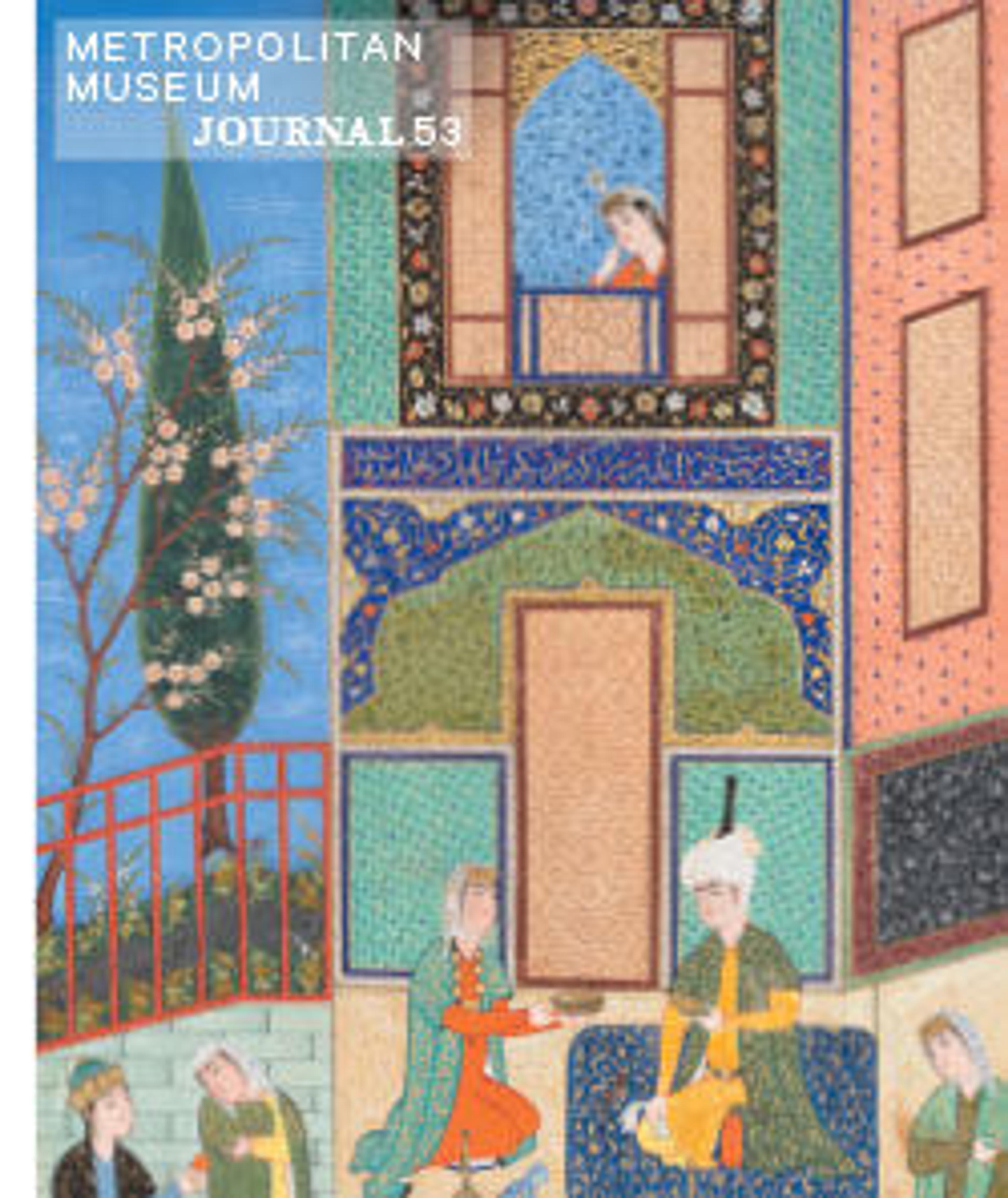"The Coronation of the Infant Shapur II", Folio 538r from the Shahnama (Book of Kings) of Shah Tahmasp
The last section of the Shahnama chronicles the reigns of the Sasanian kings of Iran. Here, the tiny infant Shapur, born after the death of his father Hurmuzd II, is depicted seated on an ornately bejeweled throne as his nurse fans him. The artist Muzaffar 'Ali’s lifelong familiarity with the court and his good-natured approach to its denizens inform the portrayal of the servants bearing jewels and gifts for the new king, the chatting courtiers in the foreground, and the elegant ladies who observe from a window above the door.
Artwork Details
- Title: "The Coronation of the Infant Shapur II", Folio 538r from the Shahnama (Book of Kings) of Shah Tahmasp
- Author: Abu'l Qasim Firdausi (Iranian, Paj ca. 940/41–1020 Tus)
- Artist: Painting attributed to Muzaffar 'Ali (Iranian, active late 1520s–70s; died ca. 1576)
- Date: ca. 1525–30
- Geography: Made in Iran, Tabriz
- Medium: Opaque watercolor, ink, silver, and gold on paper
- Dimensions: Painting:
H. 13 1/4 in. (33.7 cm)
W. 8 11/16 in. (22.1 cm)
Entire Page:
H. 18 9/16 in. (47.1 cm)
W. 12 1/2 in. (31.8 cm) - Classification: Codices
- Credit Line: Gift of Arthur A. Houghton Jr., 1970
- Object Number: 1970.301.59
- Curatorial Department: Islamic Art
More Artwork
Research Resources
The Met provides unparalleled resources for research and welcomes an international community of students and scholars. The Met's Open Access API is where creators and researchers can connect to the The Met collection. Open Access data and public domain images are available for unrestricted commercial and noncommercial use without permission or fee.
To request images under copyright and other restrictions, please use this Image Request form.
Feedback
We continue to research and examine historical and cultural context for objects in The Met collection. If you have comments or questions about this object record, please contact us using the form below. The Museum looks forward to receiving your comments.
